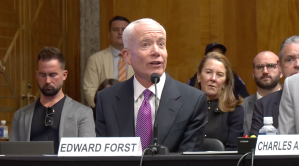GSA launches customer feedback pilot
Hate applying for a passport? Was getting a new Social Security card a pain?
The government wants to know. On Tuesday, the General Services Administration launched a pilot to gather customer feedback and use it to improve the services.
Called Feedback USA, the tool will allow citizens to express their opinions when interacting in-person with State Department passport centers and Social Security Administration offices by visiting a small kiosk upon their exit. The feedback will be given to an agency representative anonymously and in real time.
This initiative stems from the work of GSA’s customer team in the Office of Citizen Services and Innovative Technologies to use data to enhance customer experience, the focus of a 2011 executive order and an Office of Management and Budget Cross-Agency Priority goal established in 2014.
The GSA team has been working internally on the Federal Acquisition Service’s Common Acquisition Platform and the Public Building Service’s annual tenant survey. In the case of the latter, the team was able to transform a print-based survey that cost $1 million to put out and that produced little tangible response data into a digital tool tailored to actionable concepts that costs $24,000.
“You need to have something tangible in front of people,” said Victoria McFadden, deputy chief customer officer in GSA’s Office of Customer Experience. “It can’t just be anecdotal evidence. It has to be based on some sort qualitative or quantitative research that points to some specific things people can work on.”
The team — led by Chief Customer Officer Phaedra Chrousos, who is also the associate administrator of OCSIT and 18F — conducted listening tours at several agencies in the past year since its launch and decided in-person feedback was on area in which the government struggles to collect tangible data. McFadden said agencies told her team in-person interaction is like a “black hole.”
Using kiosks from contractor Happy or Not, Feedback USA gives visitors to State and SSA buildings the opportunity to express their feelings upon exiting by pressing one button. The company’s standard interface uses four different smiley face buttons that range from very happy to very unhappy. McFadden said the kiosks have an average response rate of 10 to 15 percent.
McFadden said the compiled data can show deeper trends to explore. For instance, a similar exit survey in Scottish airports indicated traveler satisfaction was much worse on weekends, prompting officials to explore why. In the end, the airports found it was because lower tier supervisors typically worked the weekend shifts, she said. But once managers shifted the schedules with experienced supervisors working on the weekends as well, satisfaction increased.
In the same way, GSA hopes to help its partnering agencies “understand what their customers need and then help them get to those root causes,” McFadden said.
The pilot will run for a year and could expand to other agencies.






